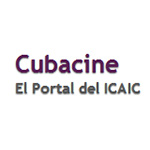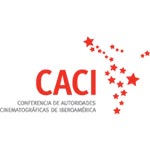 “Nuestro objetivo final es nada menos que lograr la integración del cine latinoamericano.
Así de simple, y así de desmesurado”.
“Nuestro objetivo final es nada menos que lograr la integración del cine latinoamericano.
Así de simple, y así de desmesurado”.
Gabriel García Márquez
Presidente (1927-2014)


-

Brasil: La Televisión Pública como estrategia de desarrolloPor Nora de Izcue“Hoy, como ser humano, siento la falta de una televisión que discuta los principales temas de la sociedad. Dios me dio un segundo mandato para hacer cosas nuevas y una de ellas es la Televisión Pública”. Con estas palabras, el Presidente del Brasil, Luís Ignacio Lula da Silva, reafirmaba la política cultural implementada desde su primer mandato, que otorga a la comunicación audiovisual la condición de herramienta estratégica del Estado para apoyar el desarrollo y propiciar la inclusión social de los vastos sectores de la población. Fue al clausurar el “I Forum Nacional de Tvs Públicas” realizado en la ciudad de Brasilia el pasado mes de mayo. Conocer esta experiencia puede dar luces sobre los caminos a seguir.
En el año 2003, la Secretaría del Audiovisual del Ministerio de Cultura lanzó el “Programa Brasilero de Cinema y Audiovisual: Brasil, un país de múltiples pantallas”, título que expresa la voluntad de una política pública que tome en cuenta la pluralidad cultural del país, entendiendo que es ese capital social el que garantizará las condiciones necesarias para afirmar su autonomía como productor de contenidos que alimenten con repertorio nuevo a la cultura masiva internacionalizada. Con novedosos programas y acciones, se vienen obteniendo importantes avances en la producción y difusión de los productos audiovisuales brasileros.
En este contexto, el Brasil pone los ojos en la televisión pública y asume el desafío que implica la revolución tecnológica y la reorientación hacia un nuevo modelo de producción cultural que debe “encontrar nuevas maneras de hacer y de ver televisión y nuevos niveles de compromiso con el público telespectador, respetando sus derechos y reconociendo sus demandas”. La importancia que se da al tema lo confirma la presencia de cinco Ministros de Estado, de los Presidentes de las dos Cámaras Legislativas y numerosos parlamentarios y directivos estatales en la apertura del “I Forum Nacional de Tvs Públicas”.
Con una televisión comercial que ha desarrollado una industria poderosa y reconocida por su calidad, las televisoras públicas, iniciadas hace 35 años, cuentan hoy con cerca de 300 canales con distintos niveles de infraestructura y alcance y con diversas formas de propiedad, de financiamiento y de énfasis en su programación. Su característica es el compromiso con la sociedad y no con el mercado, valorizando al público no solo como consumidor sino, primordialmente, como ciudadano.
Dentro de su diversidad, gran parte de las televisoras públicas se han asociado de acuerdo con sus principales líneas de acción dividiéndose en cuatro grupos: Las educativo-culturales, cuyas señales cubren 2.880 municipios que representan a más del 70% de la población; las universitarias, que involucran a 85 instituciones de enseñanza superior; las legislativas, que con un número cercano a 60 son mantenidas por los poderes legislativos de las esferas federal, estatal y municipal y, las comunitarias, con cerca de 70 canales cuya programación es de libre acceso a la comunidad y son coordinadas por entidades no gubernamentales sin fines de lucro. Algunas han logrado un alto nivel tecnológico y de calidad en su programación, pero la mayoría enfrenta serios problemas de infraestructura y desfase tecnológico, de financiamiento, de discontinuidad en la gestión y de bajo nivel de audiencia.
La Secretaría del Audiovisual ha venido apoyando a las Tvs. Públicas desde el año 2003, pero el próximo advenimiento de la televisión digital presenta un nuevo escenario para el cual es indispensable prepararse. Esta revolución tecnológica multiplicará el alcance de los medios de comunicación social y otorgará una nueva dimensión al rol del lenguaje audiovisual. Nada más indicado que la televisión pública para la comunicación entre los individuos y de estos con el Estado y con la sociedad. En septiembre de 2006 se abrió un amplio debate a nivel nacional que, con grupos de trabajo multisectoriales, culminó en mayo de 2007 con el Forum.
Lo primero que surgió en los debates del Forum fue la necesidad de articular internamente al sector, estableciendo redes de funcionamiento integrado, que coordinen a la vez con el gobierno federal la configuración de políticas de fomento que permitan la plena explotación de su potencial. El modelo de gestión deberá ser independiente y manejado por técnicos y representantes de la sociedad civil, asegurando de esta manera la calidad y diversidad de contenidos. El financiamiento debe provenir de diversas fuentes para evitar el control de la gestión por un financista mayoritario, y, mientras se construye su identidad, las televisoras deben ir adecuándose gradualmente para la migración digital.
Como todo proyecto de esta naturaleza, el de la televisión pública del Brasil es ambicioso y difícil, pero las bases ya están sentadas con la firme decisión política del gobierno, con el compromiso de los gestores y operadores de los canales y con el apoyo de una sociedad que ve en ella una posibilidad de formación, de participación y de fortalecimiento de la democracia y de la identidad.
 Brazil: The public television as a strategy for development
Brazil: The public television as a strategy for development
By Nora de Izcue
“Today, as a human being, I feel the absence of a television which discusses the main issues of society. God has given me a second term of office to do new things and Public Television is one of them”. With these words, Brazilian President, Luís Ignacio Lula da Silva, reaffirmed the cultural policy implemented since his first term, which gave audiovisual communication the status of strategic tool of the state in order to support the development and favor the social inclusion of the ample sectors of the population. This happened in the closing ceremony of the “First National Forum of Public Television stations”, which took place in last May in Brasilia. Knowing this experience can bring light upon the paths to be followed.
In 2003, the Secretariat of Audiovisuals of the Ministry of Culture launched the “Brazilian Program of Cinema and Audiovisual: Brazil, a country of multiple screens”, a title that expresses a will for a public politics that takes into account the cultural plurality of the country, with an understanding that the social capital is the one which guarantees the necessary conditions to affirm its autonomy as producer of contents that can supply a new repertoire to the internationalized massive culture. With innovative programs and actions, important advances in production and dissemination of audiovisual Brazilian products are being obtained.
In this context, Brazil focuses on public television and takes the challenge implied by the technological revolution and the reorientation toward a new cultural production model which must “find new ways of making and perceiving the television and new levels of commitment with the TV audience, respecting their rights and acknowledging their demands”. “The importance given to the topic is confirmed by the presence of five Ministers of State, the Presidents of the two Legislative Chambers and numerous members of parliament and state executives at the opening ceremony of the First National Forum of Public Television stations”.
With a commercial television which has developed a powerful industry, well known for its quality, the public television stations, started 35 years ago, have nowadays nearly 300 television channels with different levels of infrastructure and scope and with diverse ownership forms, funding and emphasis in their programming. They are characterized by their commitment with society, not with the market, giving value to the public not only as a consumer but mainly as a citizen.
Among their diversity, most public television stations have established associations according to their main lines of action; they are divided in four groups: the educational-cultural ones, with signals covering 2.880 municipalities which represent more than 70% of the population; the university ones, which involve more than 85 higher education institutions; the legislative ones, which are financed by the legislative powers of the federal, state and municipal spheres and the community ones with nearly 70 channels and with free access programs for the communities. They are coordinated by non profit, non governmental entities. Some have achieved high technological and quality levels in their programs, but most of them also face serious infrastructure problems and technological phase out, problems with funding and discontinuation in management as well as low level of TV audience.
The secretariat of audiovisual has been supporting the public television stations since 2003, but the new advent of digital television presents a new scenario for which it is indispensable to be prepared. This technological revolution will multiply the scope of social communication means and will give a new dimension to the role of audiovisual language. There is nothing better than public television for communication among the individuals and between the individuals and the State and society. In September 2006, a nation wide debate was promoted with multi-sector work groups which ended in May 2007 with the Forum.
The first thing that emerged at the forum debates was the need to articulate the sector internally, establishing networks of integrated functioning, which at the same time coordinate with the federal government the configuration of promotion politics which will allow the full exploitation of its potential. The management model must be independent and managed by technicians and representatives of the civic society, thus guaranteeing the quality and diversity of the contents. Funding must come from different sources in order to avoid management control by a major shareholder, and while their identity is being built, the television stations must gradually adequate themselves for their shift to the digital technology.
Like any other project with a similar nature, the project of public television of Brazil is ambitious and difficult, but foundations are laid with a strong political decision of the country, with the commitment of the promoters and operators of the channels and the support of a society which perceives it as a possibility for training, participation and strengthening of democracy and identity.
















